#circa 1885
Text
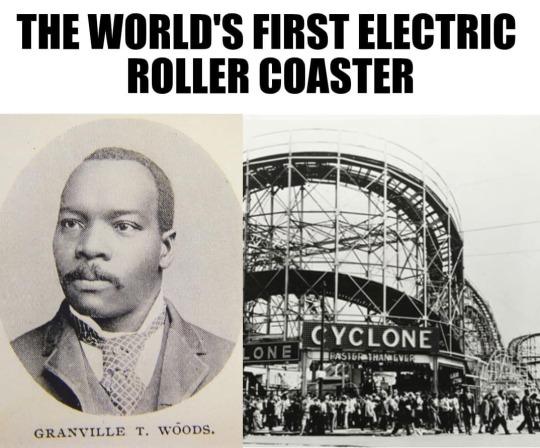
THE WORLD'S FIRST ELECTRIC ROLLER COASTER
Granville T. Woods (April 23, 1856 – January 30, 1910) introduced the “Figure Eight,” the world's first electric roller coaster, in 1892 at Coney Island Amusement Park in New York. Woods patented the invention in 1893, and in 1901, he sold it to General Electric.
Woods was an American inventor who held more than 50 patents in the United States. He was the first African American mechanical and electrical engineer after the Civil War. Self-taught, he concentrated most of his work on trains and streetcars.
In 1884, Woods received his first patent, for a steam boiler furnace, and in 1885, Woods patented an apparatus that was a combination of a telephone and a telegraph. The device, which he called "telegraphony", would allow a telegraph station to send voice and telegraph messages through Morse code over a single wire. He sold the rights to this device to the American Bell Telephone Company.
In 1887, he patented the Synchronous Multiplex Railway Telegraph, which allowed communications between train stations from moving trains by creating a magnetic field around a coiled wire under the train. Woods caught smallpox prior to patenting the technology, and Lucius Phelps patented it in 1884. In 1887, Woods used notes, sketches, and a working model of the invention to secure the patent. The invention was so successful that Woods began the Woods Electric Company in Cincinnati, Ohio, to market and sell his patents. However, the company quickly became devoted to invention creation until it was dissolved in 1893.
Woods often had difficulties in enjoying his success as other inventors made claims to his devices. Thomas Edison later filed a claim to the ownership of this patent, stating that he had first created a similar telegraph and that he was entitled to the patent for the device. Woods was twice successful in defending himself, proving that there were no other devices upon which he could have depended or relied upon to make his device. After Thomas Edison's second defeat, he decided to offer Granville Woods a position with the Edison Company, but Woods declined.
In 1888, Woods manufactured a system of overhead electric conducting lines for railroads modeled after the system pioneered by Charles van Depoele, a famed inventor who had by then installed his electric railway system in thirteen United States cities.
Following the Great Blizzard of 1888, New York City Mayor Hugh J. Grant declared that all wires, many of which powered the above-ground rail system, had to be removed and buried, emphasizing the need for an underground system. Woods's patent built upon previous third rail systems, which were used for light rails, and increased the power for use on underground trains. His system relied on wire brushes to make connections with metallic terminal heads without exposing wires by installing electrical contactor rails. Once the train car had passed over, the wires were no longer live, reducing the risk of injury. It was successfully tested in February 1892 in Coney Island on the Figure Eight Roller Coaster.
In 1896, Woods created a system for controlling electrical lights in theaters, known as the "safety dimmer", which was economical, safe, and efficient, saving 40% of electricity use.
Woods is also sometimes credited with the invention of the air brake for trains in 1904; however, George Westinghouse patented the air brake almost 40 years prior, making Woods's contribution an improvement to the invention.
Woods died of a cerebral hemorrhage at Harlem Hospital in New York City on January 30, 1910, having sold a number of his devices to such companies as Westinghouse, General Electric, and American Engineering. Until 1975, his resting place was an unmarked grave, but historian M.A. Harris helped raise funds, persuading several of the corporations that used Woods's inventions to donate money to purchase a headstone. It was erected at St. Michael's Cemetery in Elmhurst, Queens.
LEGACY
▪Baltimore City Community College established the Granville T. Woods scholarship in memory of the inventor.
▪In 2004, the New York City Transit Authority organized an exhibition on Woods that utilized bus and train depots and an issue of four million MetroCards commemorating the inventor's achievements in pioneering the third rail.
▪In 2006, Woods was inducted into the National Inventors Hall of Fame.
▪In April 2008, the corner of Stillwell and Mermaid Avenues in Coney Island was named Granville T. Woods Way.
471 notes
·
View notes
Text



Nothing quite says the holidays like comfortable dressing gowns. And in the late 1800s, the Western market was absolutely besotted with dressing gowns--for men and women.
This 1885 deep berry dressing gown is covered in astonishingly beautiful embroidery featuring birds and lilies. It was made in Japan, specifically for Western audiences. The silk is faille, once again, so it drapes absolutely beautifully, and the detail on the pattern is one of the most stunning things I've seen in a long time. I can't even begin to wrap my head around the time and attention this would take.
The silk faille color is one of my favorites in the world. I want to personally thank LACMA for their amazing photography on this one.
#dressing gown#Japanese fashion#1880s fashion#circa 1885#fashion history#threadtalk#costume#victorian fashion#historical costuming#textiles#costume history#late victorian fashion
790 notes
·
View notes
Text

#historical fashion polls#fashion plate#fashion poll#historical dress#historical fashion#dress history#fashion history#polls#tumblr polls#19th century#19th century fashion#late 19th century#19th century dress#1880s fashion#1880s dress#1880s#circa 1885
58 notes
·
View notes
Text

Two years old photo. The most intricate and ornate dress I have ever made.
#victoriancostume#victoriandress#victorian#vintagestyle#circa 1885#historicalsewing#historicalfashion#historical costuming
18 notes
·
View notes
Text

16 notes
·
View notes
Text

Rio Capibaribe, Casa de Detenção do Recife Atual Casa da Cultura - Centro do Recife Em 1885.
Photo Moritz Lamberg.
#Casa da Cultura Recife#1880#Casa de Detenção do Recife#Presídio#Recife Antigamente#circa 1885#Recife PE#Recife City#Pernambuco#Nordeste#Photography#Photo#Fotografia Antiga#Efemérides#Vintage#Vintage Photography#Old Photo#Old Photography
2 notes
·
View notes
Text

Lion in the Desert (circa 1885) | Jean-Léon Gérôme (1824-1904)
1K notes
·
View notes
Text
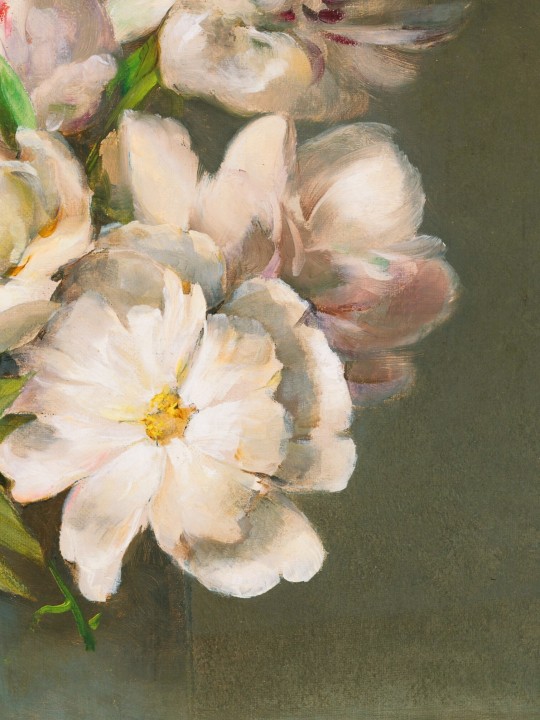
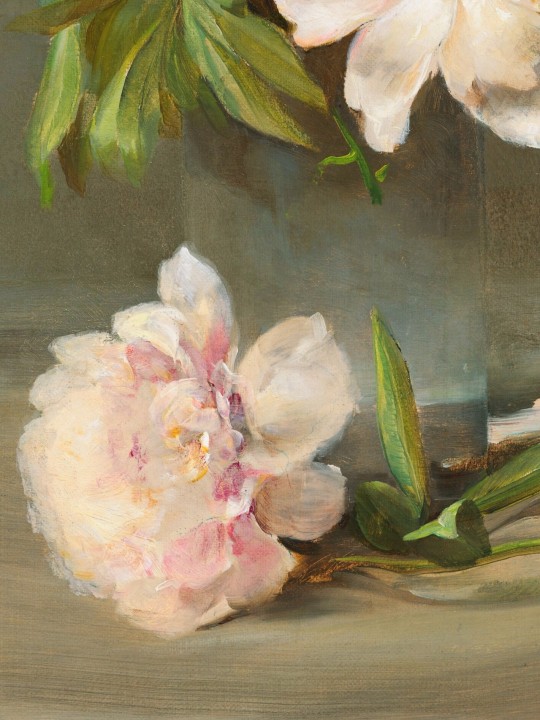
Charles Ethan Porter — Peonies in a Vase. details. circa 1885
#charles ethan porter#art#art history#art detail#art details#detail#details#painting#19th century#19th century painting#american painting#american#porter#peonies#still life#still life painting
124 notes
·
View notes
Text
The thing with gods and youkai in Touhou is that they do not have "biology". The physiology of a youkai or full-fledged god is three preternatural metaphors in a trench coat -- they are entirely supernatural entities, born from human fears and imagination. It's stories told around the campfire which has blossomed into mythology, plus "common sense" circa 1885 about how life works and exactly zero science, with a vague-gesture towards "feminine" in the case of the humanoids in Gensokyo. The cast of Touhou Project are "girlthings" in a very literal sense.
This even applies to different species of youkai. In ... Wild and Horned Hermit, I believe, a bunch of kappa effectively transformed into yamawaro after staying on dry land for too long and they just rolled with it, because "yamawaro are kappa that live on dry land". IIRC rhere's more than one folkloric story about foxes or tanuki becoming human after shapeshifting and deciding to live that life for the rest of their lives.
And no details have been given about how youkai reproduce, because ZUN just isn't into that kind of thing; however, the existence of half-human and half-youkai hyprids like Rinnosuke, and of sisters (the Komeijis) and of youkai-magicians who are born (Patchouli), suggests that humanoid youkai can have children the normal way. It Just Works.™ And since gods in Touhou canon are basically "human plus" in appearance outside of animal theming, it should be even more straightforward. Gender? I 'ardly know 'er! If you're "woman-shaped" you can get pregnant (bar folklore-compatible reasons why you couldn't, such as becasue you're dead). Birth happens normally, because that's "just common sense"; the child has whatever shape and set of features would be the most reasonable, in folkloric and "narrative" terms, via the path of least resistance. If the parents are the same "species", the child is also that species, and if one of the parents is a human, the result is just a hanyou (if the other parent is a youkai) or arahitogami (if the other is a god). IIRC Touhou doesn't specifically have examples where one parent is a god and the other is a youkai, but again, it should whatever is the most reasonable; there won't be any bizarre hybrids or whatever. Oh, the children would have a touch of both the monstrous and the divne, of course, but that's par for the course with regard to the blurred boundary between humans, gods, and youkai.
Therefore, Tsukasa and Sanae's hypothetical child would be normal.
#shenanigans#philosophy#touhou#youkai#gods#kami#tsukasa kudamaki#sanae kochiya#oil fire#wlw#normal#we give our thanks to the gods of fertility
204 notes
·
View notes
Text
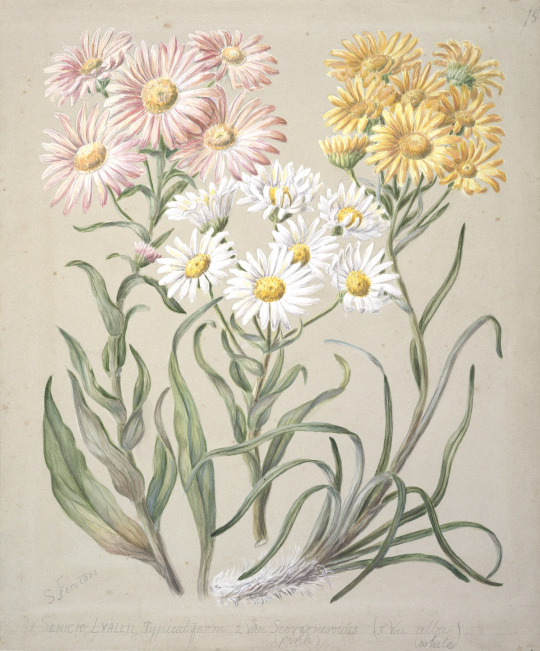
New Zealand snow groundsels (Dolichoglottis lyallii; Dolichoglottis scorzoneroides) by Sarah Featon (circa 1885).
Watercolour.
Museum of New Zealand
Te Papa Tongarewa.
212 notes
·
View notes
Text
Dress, circa 1883-1885, Scotland
Silk, cotton, linen, metal




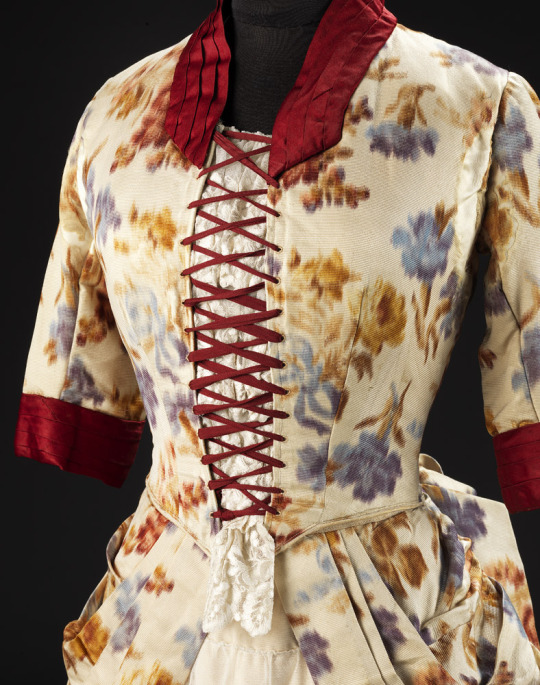


Description: Woman’s dress in cream corded silk chine printed with abstract floral design in red, blue, brown and yellow, with small, rectangular neckline with facing in pleated red silk satin, fitted bodice constructed in six panels, fastening centre front with red cord lacing through fourteen pairs of eyelets over a stomacher-style panel of horizontal cream machine lace frills. Elbow-length sleeves with pleated red silk satin cuffs. Skirt, full-length, fastening on left with five metal hooks and eyes, chine overskirt pleated into waistline at front and over hips at side, side panels trimmed with vertical border of cream machine lace and frill of cream machine lace extending into lower side edges of train, centre back cut-in-one with bodice with additional width in skirt to go over bustle, extending into a long train, red silk satin frill under hem. Petticoat-style underskirt revealed in front in cream silk satin underskirt decorated with six slightly asymmetrical horizontal rows of cream machine lace. Bodice lined in printed cotton, fitted with eight metal bones and waistband. Skirt front lined with linen and printed cotton, sides and back lined with printed cotton, integral thirteen-inch wire mesh bustle with two sets of twill weave tapes to pull fullness to back to create train, balayeuse around hem of skirt and train. Waistband printed in light green ‘R. Simpson and Sons Costumiers Jamaica St. Corner Glasgow’.
Worn by Ann Smith, the wife of Robert Kirk Simpson of R Simpson and Sons.
This romantic dress is printed with roses and has machine-lace frills on the skirt. In the 1870s and 1880s fashion looked back to the late 1700s, with its flamboyant fabrics, for inspiration. The blurred effect on this evening dress is created by printing the warp prints before the fabric is woven. This ikat technique originated in Asia and was introduced to France in the mid-1700s, where it was known as chiné. Here, it’s use, together with the laced bodice and open over-skirt draped back over the hips and into the bustle, reflect the historical revival style with its imitation of an eighteenth-century open gown.
Glasgow Museums Collection Online
70 notes
·
View notes
Text

Half an oyster shell demonstrating pearl shell button manufacture, circa 1875-1885
This object is part of a collection which illustrates how pearl shell was made into pearl buttons in Sydney in the 1930s. The display was given to the Museum by The Pearlbutton Manufacturing Company of Foster Street, Sydney, in 1933.
Pearl divers in places such as Thursday Island, Broome and Port Darwin harvested the Golden Lip pearl shell, (Pinctada maxima), from which the buttons were made. The shell was shipped to the Sydney factory for production. After cutting the button shaped pieces from the shell, the 'blanks' were then split to an even thickness, an operation performed by hand and one requiring considerable judgement and skill.
Buttons made from pearl shell were valued because they were durable and retained their lustre unaffected by washing. After World War II, plastics replaced pearl shell as the preferred material for buttons.
The Torres Strait supplied over half the world demand for pearl shell in the 1890s. In addition to buttons, pearl shell was used for cutlery, hair combs, jewellery, decorative objects and inlay for furniture. The Powerhouse Museum collection includes a variety of objects made from pearl shell.
#oyster shell#pearl shell button manufacture#pearl shell buttons#button manufacture#pearl shell#industrial design#object design
321 notes
·
View notes
Text

When you think about wearing a dress to dinner, it probably isn't this extravagant. But for Victorians, dinner gowns were totally a thing. In fact, it wasn't uncommon for ladies of status to change three or four times a day!
This gown is by Emile Pingat, a French designer and contemporary (and competitor) of Charles Frederick Worth. He began his fashion house in the mid-1860s, and went on to dress some of the wealthiest, most sophisticated people in Europe and the Americas.
To me, Pingat is immediately recognizable with his divine details, architectural tailoring, and relatively earthy color palette--lots of black, gold, tan, and neutrals.
This 1885 dinner gown is no exception. It's silk velvet and machine made lace, but all about the details. The lace overlay mimics brocades and damasks, but the extra sheerness makes it extra glimmery. Plus we've also got a train--always a plus. We know it was worn by socialite Mrs. Charles G. Roebling. The gown also has another bodice, as many dresses did during this period.
From the Philadelphia Museum of Art.
#emile pingat#pingat#french fashion history#haute couture#fashion history#threadtalk#costume#textiles#historical costuming#victorian fashion#costume history#late victorian fashion#1880s fashion#circa 1885#19th century fashion
421 notes
·
View notes
Text

#historical fashion polls#fashion plate#fashion poll#historical dress#historical fashion#dress history#fashion history#19th century#19th century fashion#late 19th century#19th century dress#1880s fashion#1880s dress#circa 1880#1880s#circa 1885
52 notes
·
View notes
Text

Auguste Rodin
La Danaïde, circa 1885-1889
Marble
365 notes
·
View notes
Text
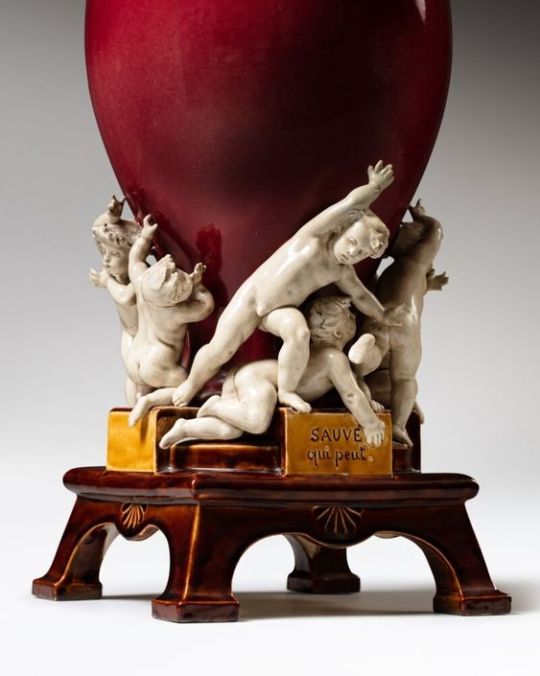

"Sauve qui peut" vase
Louis-Robert Carrier-Belleuse (1848-1913), circa 1885 Choisy-le-Roi Manufactory "Sauve qui peut" vaseglazed ceramic
51 notes
·
View notes